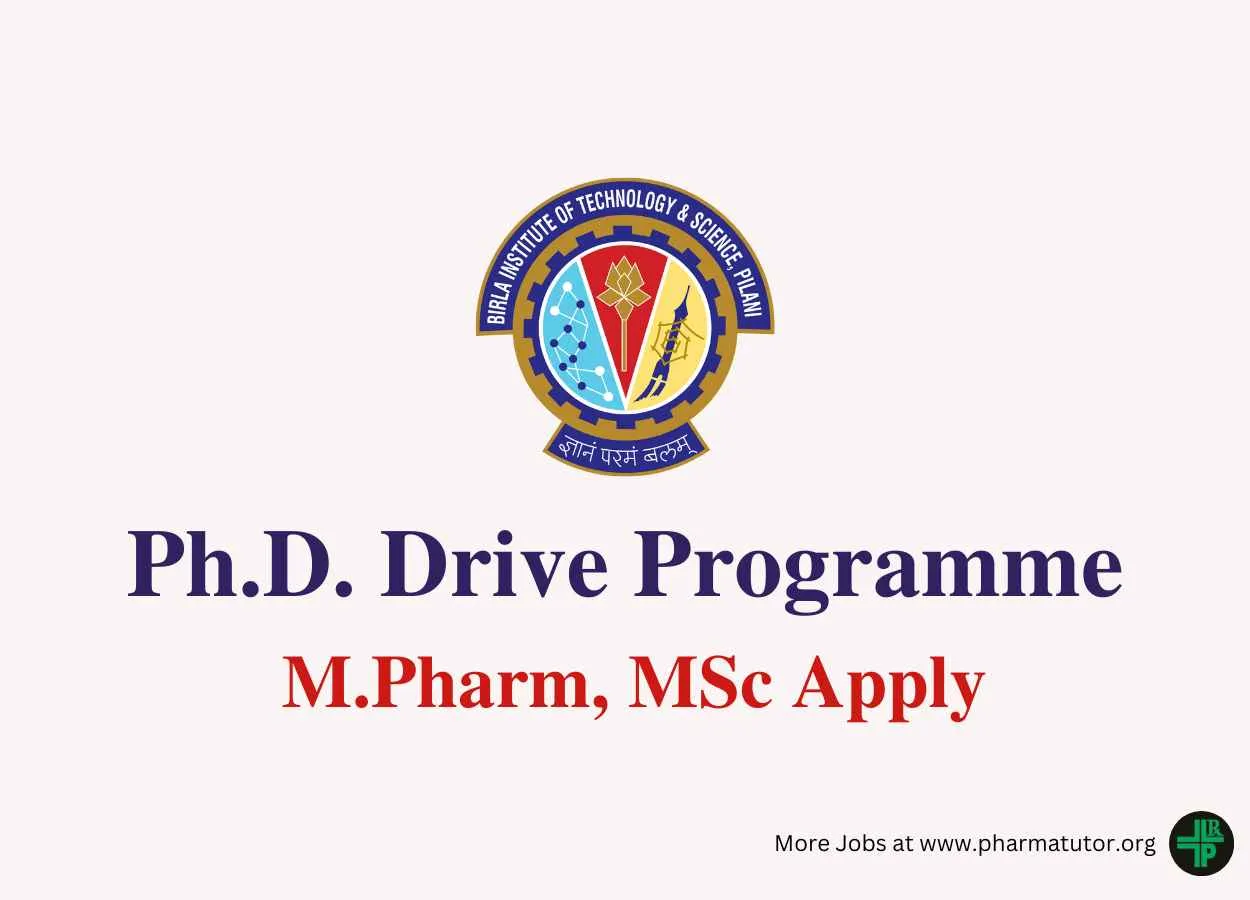BITS Pilani is a Deemed to be University, offering on-campus programs to more than 17,500 students across its campuses in Pilani, Goa, Hyderabad and Dubai. It has been recognized as an Institute of Eminence by the Ministry of Education, Government of India in 2020. In the NIRF 2022 rankings, BITS Pilani has been ranked 5th in Pharmacy, 18th in the University category and 29th in Engineering. In QS Asia University Rankings 2023, BITS has been ranked 188th, the only private institute from India in Asia Top 200, and at 18 in India.
Are you ready to turn your passion for research into a thriving entrepreneurial venture? Look no further than the PhD DRIVE program at BITS Pilani! This innovative initiative not only offers a stimulating academic environment but also provides a unique opportunity to transform your groundbreaking research into real-world solutions.
Title of the Research Problem : Development of novel ECM-scaffold-based organoid models as a robust, high-throughput drug screening platform
Abstract of the Research problem : Organoids are tiny, 3D structures that can mimic the functions of organs. Organoids mimic organ functions, but current methods of creating them are expensive and non-reproducible. To overcome this, we have developed a novel technology called ECM-ORGANOID, which is based on our patented ECM-mimetic glycosaminoglycan (GAG)-based scaffold. Unlike bio-sourced scaffolds, our technology is inexpensive, simple to follow, and highly reproducible. It can be used for drug screening with multiple readouts, such as biomarkers, cell viability, and metabolic response in the same construct. This will be useful for screening potential drug candidates targeting various disease pathways.
Target TRL to be achieved : TRL-5 or above
Previous work done by the faculty : The team has been working on the development of tumoroids to analyze drug activity. We have evaluated many different strategies for making reproducible tumoroids, including a unique technique for making cell-embedded organoids using glycosaminoglycan-based polymers. These organoids exhibited improved cell survival, proliferation, and function. Dr. Singh has previously developed a 3D-spheroid-based animal tumor model, which exhibited pathology akin to solid tumors observed in patients.
Our collaborator, Oncoseek Bio, has successfully developed a lung spheroid platform for screening antibodies and antibody-drug conjugates. They have also developed fibrosis spheroid for kidney cell lines (CKD), NAFLD/NASH spheroid, and several cancer spheroids.
Related Research Equipment / Lab Space / Facilities Available for solving this problem : Cell culture facility, Advanced microscopy, Real-time PCR, Western blot, etc.
UN SDG Impacted : UN-SDG-3 (Good Health and Well Being), UN-SDG-9 (Industry, Innovation, Infrastructure)
Ideal Applicant Background : The ideal applicant can be from Biology or Pharmacy background. They should have significant hands-on experience in cell culture and molecular biology techniques.
Preferred Discipline of the Applicant : Biology or Pharmacy
Faculty Name : Aniruddha Roy
For Ph.D project under Aniruddha Roy : Apply Now
Title of the Research Problem : Predictive Forecasting of Alzheimer’s Disease: Use of Optical Coherence Tomography (OCT) as a Diagnostic Tool with Emphasis on Related Molecular Signaling Pathways responsible in Retinal Degeneration
Abstract of the Research problem : The proposal aims using Optical Coherence Tomography (OCT)- non-invasive, diagnostic optometric tool, for predictive forecasting of select neurodegenerative disorders/diseases much early in life, before identifiable symptoms, bio-markers, precipitate. Detecting anomalies/ retinal neve fibre layer (RNFL),thinning, ganglion cell degeneration, loss of axonal projections in the optic nerve, that get altered due to small vessel changes in select brain regions associated with Alzheimer’s that reflects in retina - considered as CNS tissue, developed as an outgrowth of brain followed subsequently by correlating data from IP/OP patients, external databases, will help generate genetic algorithm(s) using artificial intelligence in early precipitation of Alzheimer’s.
Target TRL to be achieved : TRL-3
Previous work done by the faculty : CNN based deep learning architecture is used to classify the quality of OCT images and differentiate retinopathies. Simulation model was based on dataset from various sources including an open source Kaggle OCT datset, organized into three folders (train, test, val) and contains sub-folders for each image category (Normal, CNV, DME, DRUSEN).
Study involved classification of OCT images using modules, defining the path to dataset, loading the dataset, visualizing the data, defining classes, splitting data to training and test sets followed by construction of CNN model, building a linear stack and sequencing the model, validation labelling of data into various disease sets, prediction and assessment.
The model reproduced detectable retinal damages using OCT images with accuracy of about 96 % for CNV, DME and Drusen.
Related Research Equipment / Lab Space / Facilities Available for solving this problem : BAsic lab. facilities are available in BITS PIlani and SN-MRF but few equipments needs to be procured as capex besides solvents and testing kits- consumable.
UN SDG Impacted : UN-SDG-3 (Good Health and Well Being)
Ideal Applicant Background : Masters in Pharmacy- (pharamacology) with programming background; Applied mathematics/Computer Science masters student with biomedical application, programming background
Preferred Discipline of the Applicant : Pharmacy - Pharmacology specialization; Masters in Computer Science / Applied Mathematics with programming skills
Faculty Name : Mahesh R
For Ph.D project under Mahesh R : Apply Now
See All B.Pharm Alerts M.Pharm Alerts M.Sc Alerts Rajasthan Alerts
See All Other Jobs in our Database









